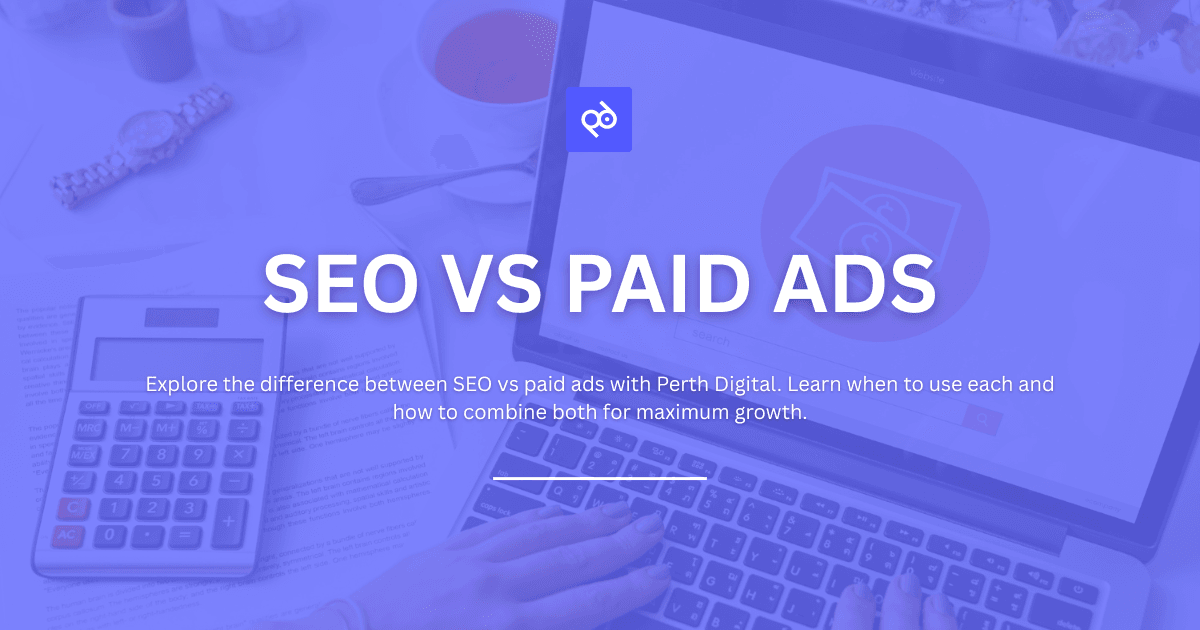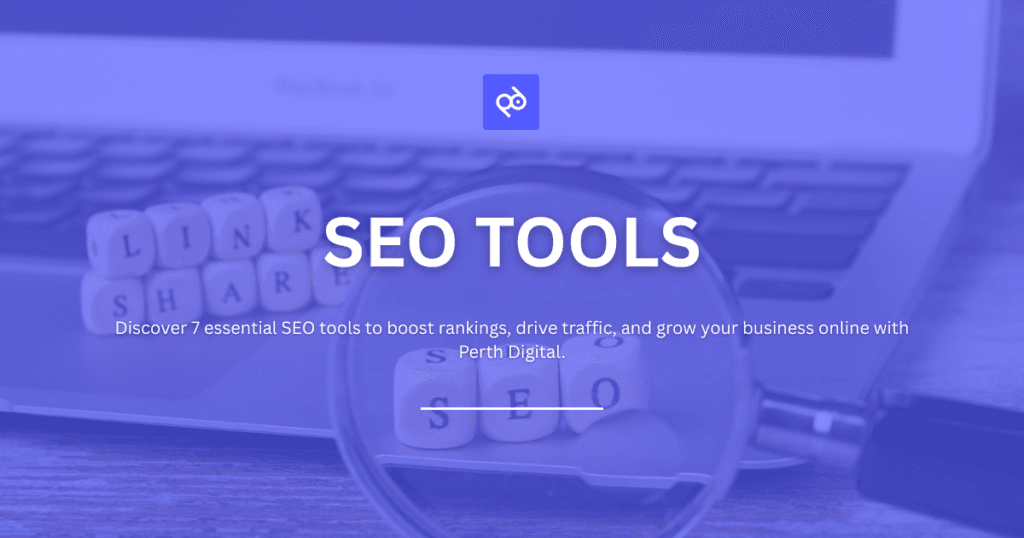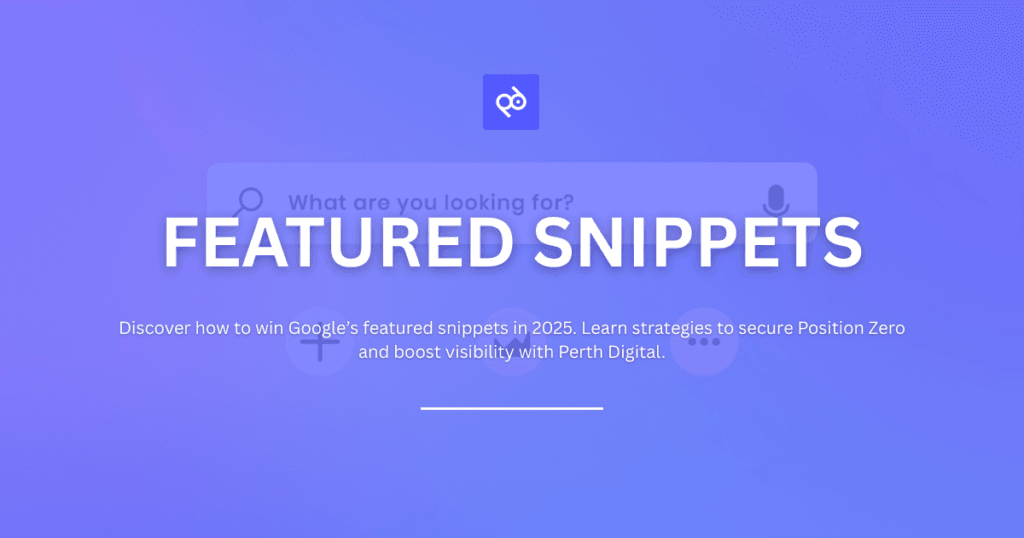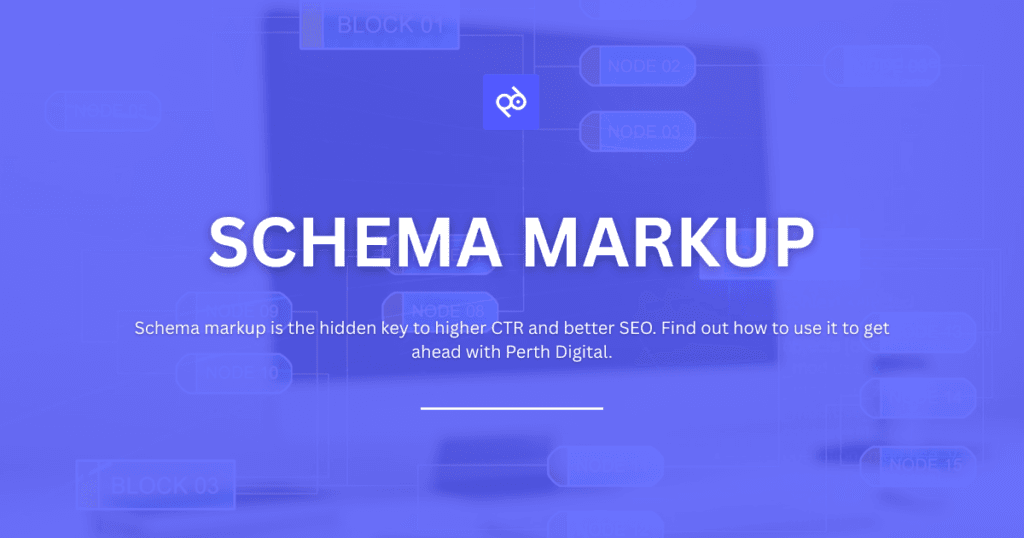Whether you’re launching a new product, expanding your market reach, or simply trying to grow your traffic, one big question stands in your way: SEO vs paid ads, which one delivers the best results?
At Perth Digital, we help Australian businesses navigate this decision every day. The truth is, there’s no one-size-fits-all answer. Instead, there are strategic reasons to invest in each channel, and even better reasons to use both in tandem. In this guide, we’ll break down everything you need to know to make the right call for your business.
What Are SEO and Paid Ads?
SEO (Search Engine Optimisation) focuses on improving your website’s visibility in organic (unpaid) search engine results. This includes optimising your site content, technical performance, mobile usability, and link profile so that Google sees it as the most relevant result for specific search queries.
Paid ads, often referred to as PPC (pay-per-click), allow you to appear in sponsored positions on Google or social platforms like Facebook and Instagram. You bid on keywords or audience segments, and your ad is shown to users immediately, so long as you’re paying for it.
The key difference lies in control and timeline: SEO builds long-term authority and equity over time, while paid ads offer immediate traffic and visibility, at a cost.
Comparing SEO and Paid Ads Based on Key Factors
Now that we’ve had a better understanding of what SEO and paid ads are, we will proceed to compare these two on important components such as speed, cost, and how well they contribute to your business overall. Or whether you should apply both of them in your digital marketing strategy.
Timeline and Speed: Patience vs. Instant Impact
Paid ads are fast. You can create a campaign today and start seeing clicks and conversions within hours. This makes PPC ideal for time-sensitive offers, product launches, or quick testing. If you need immediate visibility, paid ads are your best bet.
SEO takes time. Depending on your niche and competition, it can take several months to see first-page rankings and organic traffic. But once you’re there, you can enjoy sustained visibility without having to pay for each click. It’s a slower path, but one with lasting value.
For business owners, the choice often comes down to urgency. If you’re building long-term authority, invest in SEO. If you need short-term traffic, layer in paid ads.
Cost and Budget Control
With paid ads, costs are straightforward: you decide on a budget and pay for each click (CPC) or impression (CPM). The more you spend, the more exposure you get. You can scale budgets up or down depending on performance, which gives you control but also means your results are directly tied to ongoing spend.
SEO requires upfront investment in content creation, technical optimisation, and strategy, but the traffic you earn from organic rankings doesn’t cost extra per click. Over time, SEO becomes more cost-effective, especially as your rankings improve and traffic increases without added expense.
For many businesses, a blended approach is best: use PPC for early traction while your SEO gains momentum.
Trust, Credibility and Click Rates
Users often trust organic search results more than paid ads. Studies show that organic listings receive significantly more clicks than ads, especially in non-commercial searches. Appearing on page one organically signals credibility and authority, something money alone can’t buy.
That said, paid ads can still convert well when crafted with strong messaging and clear calls to action. They’re particularly effective for transactional or high-intent searches, such as “buy now,” “best near me,” or branded keywords.
If your goal is to build long-term trust while still driving short-term sales, SEO can do the heavy lifting while PPC supports immediate opportunities.
Targeting and Audience Relevance
One of the major strengths of paid advertising is precision. You can target users by demographics, interests, location, device, behaviour, and even remarketing criteria. This makes PPC incredibly useful for segmenting audiences and tailoring messages to different buyer types.
SEO, in contrast, targets based on keywords and search intent. You’re optimising for what people are actively searching, which naturally aligns your content with their needs. While SEO doesn’t offer the same demographic filters, it allows you to attract users who are already in research or buying mode.
When combined, PPC can help you refine your understanding of your ideal customer, while SEO allows you to capture them organically across their buying journey.
Scalability and Control
PPC is highly scalable, if you’re seeing a positive return, simply increase your budget to drive more traffic. You also have full control over what keywords, audiences, and locations you target, and you can pause or edit campaigns at any time.
SEO scalability is more gradual. As your content footprint grows and you build backlinks, your site authority increases. This naturally lifts rankings across related keywords, allowing you to scale visibility over time, but without the direct controls offered by PPC.
For business owners, this means PPC can serve as an effective short-term lever, while SEO builds the foundation for sustainable growth.
Channel Durability: Rental vs Ownership
Here’s a simple analogy: paid ads are like renting traffic, while SEO is like owning real estate.
When you stop paying for ads, your traffic disappears overnight. There’s no lasting benefit unless you’ve retargeted users or gathered first-party data. SEO, however, provides lasting visibility. Once your content ranks well, it can generate leads and sales for years, without additional spend.
This long-term durability is what makes SEO such a powerful asset. Over time, the cost per lead drops, and your organic presence compounds, becoming harder for competitors to replicate.
When to Use SEO vs Paid Ads
Use SEO if:
- You want to build authority and long-term traffic.
- Your product or service has consistent, evergreen demand.
- You’re working with a limited monthly marketing budget.
Use paid ads if:
- You need results quickly.
- You’re promoting a limited-time offer or seasonal campaign.
- You want to test messages, audiences, or landing pages rapidly.
At Perth Digital, we often advise our clients to start with PPC for quick wins, then phase in SEO for sustained momentum and lower long-term acquisition costs.
How to Make SEO and Paid Ads Work Together
Instead of choosing between them, smart businesses use both channels strategically:
- Use PPC to test keywords. Find which search terms convert best, then build SEO content around those insights.
- Support SEO content with PPC. Run ads for newly published pages to get instant traffic while waiting for organic rankings to climb.
- Retarget organic visitors. Use paid ads to re-engage users who landed on your blog or service pages but didn’t convert.
- Dominate the SERP. Appear in both the ad space and organic results to increase brand visibility and push out competitors.
This dual approach not only improves your ROI but also increases your chances of capturing users across different stages of the funnel.
Measuring ROI Across Channels
To make smart decisions, you need to track performance effectively. Here’s what to measure:
For SEO:
- Organic traffic
- Keyword rankings
- Backlinks
- Bounce rate and time on page
- Goal conversions (form fills, calls, downloads)
For Paid Ads:
- Cost per click (CPC)
- Click-through rate (CTR)
- Conversion rate
- Cost per acquisition (CPA)
- Return on ad spend (ROAS)
By aligning both channels to shared business goals, like leads or revenue, you can clearly see which combination delivers the best return and make data-driven decisions accordingly.
What’s Right for Your Business?
Choosing between SEO vs paid ads isn’t about which channel is better, it’s about what you need right now, and where you want to go.
SEO is the strategic, sustainable foundation that builds authority and drives consistent traffic over time.
Paid ads are the accelerator, great for rapid results, targeted promotions, and gaining momentum quickly.
At Perth Digital, we build integrated marketing strategies that leverage both. That way, you get the immediate performance of paid media while building a resilient, long-term presence through organic search.
Ready to Maximise Your Marketing Strategy?
Talk to the SEO and PPC experts at Perth Digital. We’ll help you strike the right balance between organic growth and paid performance. Get in touch with us today!



